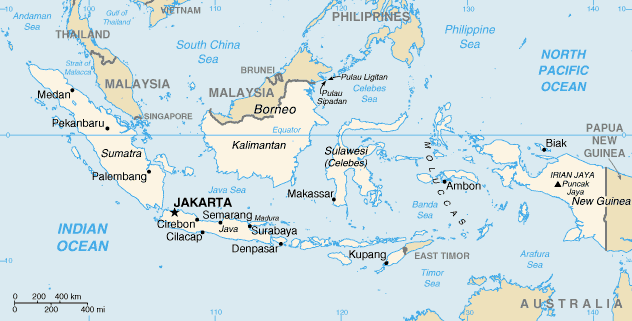Children who are motivated to cheat by copying another student's work, paying someone to write their papers, or hiring another student to take a standardized test for them could learn a few lessons from those who have avoided corruption or engaged in it around the world.
Even if the current business culture in a country sanctions corruption, the honesty espoused by Bulent Celebi's AirTies firm in Turkey offers a promising example. When Celebi established his WiFi company, which does not rely on phone lines or fiber optic cables to transmit data, he had six founding values. Besides customer satisfaction and engaged employees, he stated AirTies would be ethical. Therefore, he did not rely on bribes but, according to Elmira Bayrasli's book,
From the Other Side of the World, he launched his business by working through the laborious process of dealing with Turkey's bureaucracy and paperwork. Shortcuts, he felt, would start AirTies off in the wrong direction.
While on a visit to Nairobi, Kenya, in November, 2015, Pope Francis told a cheering crowd that corruption was easy and sweet but in the end it makes politics, even in the Vatican, and a country sick. He urged the crowd to keep corruption out of its lives, because corruption takes away joy and robs people of peace in their lives.
Major European auto and truck maker, VW, will pay at least $15 billion for developing a cheating way to pass emissions tests.
As a result of bribing doctors and hospitals by giving them kickbacks, the Japanese-based manufacturer, Olympus, paid a $646 million fine.
By pretending subprime mortgages were sound, Goldman Sachs, one of the US firms that helped bring on the 2008 recession, is expected to pay about $5 billion to resolve state and federal investigations.
In Brazil, President Dilma Rousseff and House Speaker Eduardo Cunha have been implicated in a corruption scandal involving construction firms that paid bribes to Petrobras, the state energy firm. Marcelo Odebrecht, former head of Brazil's giant construction company, designed the scheme that paid kickbacks to win contracts from senior Petrobras officials and that funded political campaigns. In March, 2016, Odebrecht was sentenced to 19 years in prison. Although Rousseff thus far has been found blameless in the Petrobras scandal, the charge of her involvement has led to a call for her impeachment and hurt the country's economy by stopping building and energy projects. Petrobras has had to stop paying dividends, and the company has cut $32 billion from its 5-year $130 billion investment plan. Now that the Federal Accounts Court has ruled that Rousseff's administration used illegal accounting practices, the prospect of impeachment is even greater. Eventually, Rousseff was out, but in June, 2017, new President Michel Temer was charged with taking $11.5 million in bribes for helping a meatpacker who had tax and loan problems.
Sigmundur David Gunnlaugsson, Iceland's Prime Minister, was the first victim of a leak of papers from the Panamanian law firm, Mossack Fonseca. In April, 2016, he stepped down, when it was disclosed that he and his wife owned an undeclared off shore account where he concealed millions of dollars from taxes. The papers reveal Mossack Fonseca also has formed off shore shell companies to help other clients launder money, dodge sanctions, and evade taxes.
Nigerian authorities fined the South African-based MTN multinational mobile telecommunications company $5.2 billion, later reduced to $3.4 billion. Of MTN's 62 million subscribers, the company failed to disconnect 5.1 million unregistered, and therefore unidentified, Sim card accounts. Kidnappers had used an unregistered Sim card from MTN to demand a ransom for Nigeria's former finance minister, Chief Olu Falae.
A November, 2015 report from the World Anti Doping Agency alleging State-sponsored doping of Russia's Olympic athletes could result in banning the country from competing in 2016's Summer Olympics. And the head of the agency that selects the countries that hold World Cup soccer matches had to resign, when winning host countries were found to have bribed their way into the honor.
In Indonesia, the government's failure to keep an up-to-date land registry results in an inability to assign blame for the devastating forest fires on the islands of Sumatra and Borneo that also have spread a thick haze of smoke to Malaysia, Singapore, and southern Thailand. All together, the smoke has caused an estimated 500,000 respiratory tract infections, and 100,000 premature deaths are a possibility. Fires are set by cheap slash and burn methods used to clear for new planting by both small scale farmers and corporate palm oil, timber (used for paper), and other agricultural corporations. Standards for the hiring and working conditions of migrant labor in the palm oil industry have failed to remedy abuses. When an investigation by the Roundtable on Sustainable Palm Oil found the Malaysian palm oil company, IOI, failed to correct deforestation violations in its concessions, Unilever and 9 other major companies cancelled their contracts with IOI.
You can read about charges of corruption Russia faces in the earlier blog post, "Hearing Voices." And Communist Party officials throughout China have been severely punished as reported in the earlier blog post, "China's Corruption Crackdown, New Bank Backing, and Release of PR Activists."
 Brussels canceled its New Year's fireworks' display and the Indonesian archipelago continues on high alert after the arrest of nine alleged Islamic terrorists involved in a plot to assassinate police, Shi'ite Muslims, and churchgoers on the main islands of Java, Sumatra, and Borneo during the 2015 Christmas and New Year holiday season. Australian authorities are urging tourists to stay away from Indonewia at this time.
Brussels canceled its New Year's fireworks' display and the Indonesian archipelago continues on high alert after the arrest of nine alleged Islamic terrorists involved in a plot to assassinate police, Shi'ite Muslims, and churchgoers on the main islands of Java, Sumatra, and Borneo during the 2015 Christmas and New Year holiday season. Australian authorities are urging tourists to stay away from Indonewia at this time.

_committee_aboard_the_multi-purpose_amphibious_assault_USS_Bataan_(LHD_5)_bring_Santa%2C_Mrs._Claus_and_their_elves_to_life_at_the_command's_children's.jpg)

.jpg)





.jpg)






